Panasonic MZ1500 review: pitch perfect picture quality
The Panasonic MZ1500 is the company's one-from-top 2023 OLED TV - and its pictures are stunning

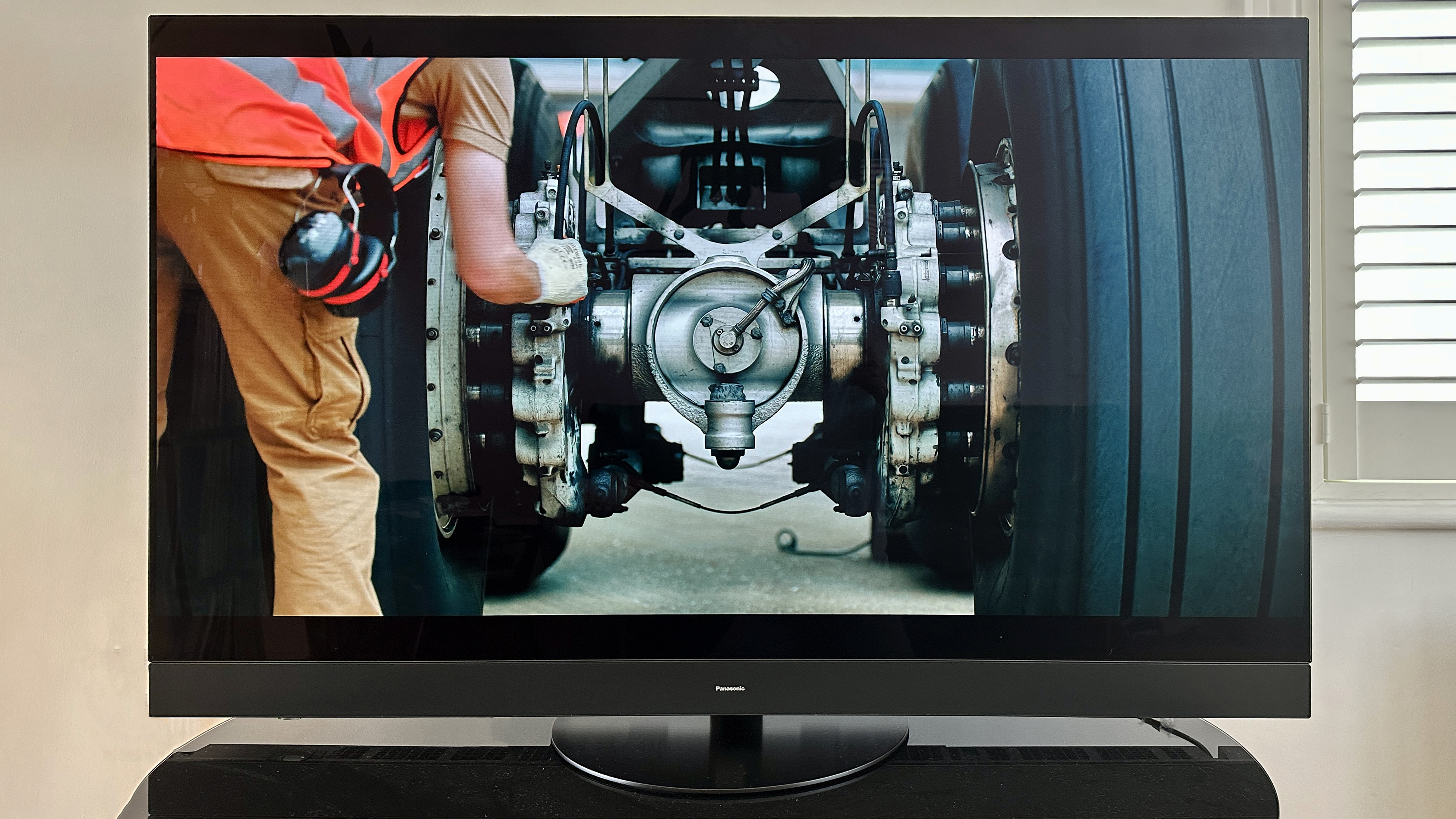
Panasonic once again demonstrates there’s nothing boring about being grown up when it comes to TVs, certainly not when the result is picture quality that’s as lifelike and confident as this. The MZ1500 is an easy contender for one of 2023's best OLED TVs - and, for most people, an even more likely purchase than the top-tier and soundsystem-toting MZ2000.
-
+
Poised, utterly convincing picture quality
-
+
An extensive specification
-
+
Improved gaming features...
-
-
...but only two HDMI 2.1 sockets
-
-
Not without competition
-
-
Can sound stressed
Why you can trust T3

Panasonic has always positioned itself as the grown-up option and the choice of professionals when it comes to televisions - and given the company’s ubiquity in pre- and post-production facilities in Hollywood and beyond, that seems fair enough. This rather high-minded attitude has sometimes made its best TVs seem less than compelling to consumers, though.
With the MZ1500 on review here, Panasonic isn’t soft-pedalling its pro credentials in the slightest - but it wants to entice gamers, as well as viewers, with the thoroughness of its specification. This kind of across-the-board appeal doesn’t come cheap, mind you. So does this new Panasonic make a case for itself away from Tinseltown as one of the best OLED TVs your hard-earned money can buy?
Panasonic MZ1500: Price & Availability
The Panasonic TX-55MZ1500 on review here - that's the 55-inch model, there's also the 65-inch version (TX-65MZ1500) - is on sale from August 2023, and in the UK is priced at £2199. Panasonic has long since given up trying to sell televisions in North America - it’s too busy churning out batteries for EVs, so it says - but in Australia it’s likely to cost around AU$4099 at this size.
Despite its position in the Panasonic TV 2023 line-up as ‘flagship-but-one’, the MZ1500 is still a fairly pricey proposition. The corresponding models from LG, Philips, Samsung and Sony are all less expensive to a lesser or greater extent - but Panasonic is hoping the thoroughness of its specification (along with its performance, of course) will allow the MZ1500 to make a case for itself.
Panasonic MZ1500 review: Features & What's New?

Rather than the Micro Lens Array (that's MLA for short) technology Panasonic uses for its flagship MZ2000 OLED TV, the MZ1500 has to make do with LG’s OLED EX panel - but Panasonic has fitted a heatsink in an attempt to deliver improved brightness by driving the panel as hard as possible. The MZ1500 shares the top-of-the-shop HCX Pro AI processor that’s also fitted to the range-topper, though.
As far as picture quality goes, Panasonic has thrown everything at the MZ1500. You get all worthwhile high dynamic range (HDR) standards, including HDR10+ Adaptive and Dolby Vision IQ, an improved Filmmaker Mode that uses the screen’s ambient light sensor to adapt image quality accordingly (an ambient light sensor that takes account of the ambient light temperature as well as its brightness, what’s more).
Auto AI reckons it knows what’s best no matter the incoming signal or the ambient conditions, so you can hand over all responsibility for picture quality if you so desire. Netflix Adaptive Calibrated Mode should bring the best from that service’s content, while True Game Mode intends to do the same with content served from current-gen consoles.
Get all the latest news, reviews, deals and buying guides on gorgeous tech, home and active products from the T3 experts
And where gaming is concerned, Panasonic reckons its new ‘Game Mode Extreme’ halves input lag compared to its 2020 OLEDs - which means the MZ1500 should now be respectable in this respect, rather than leisurely. Only two of its four HDMI inputs are at 2.1 standard, though, and one of those is also the eARC socket - quite why any HDMI input on any pricey-ish TV should only be at 2.0 standard is anyone’s guess.
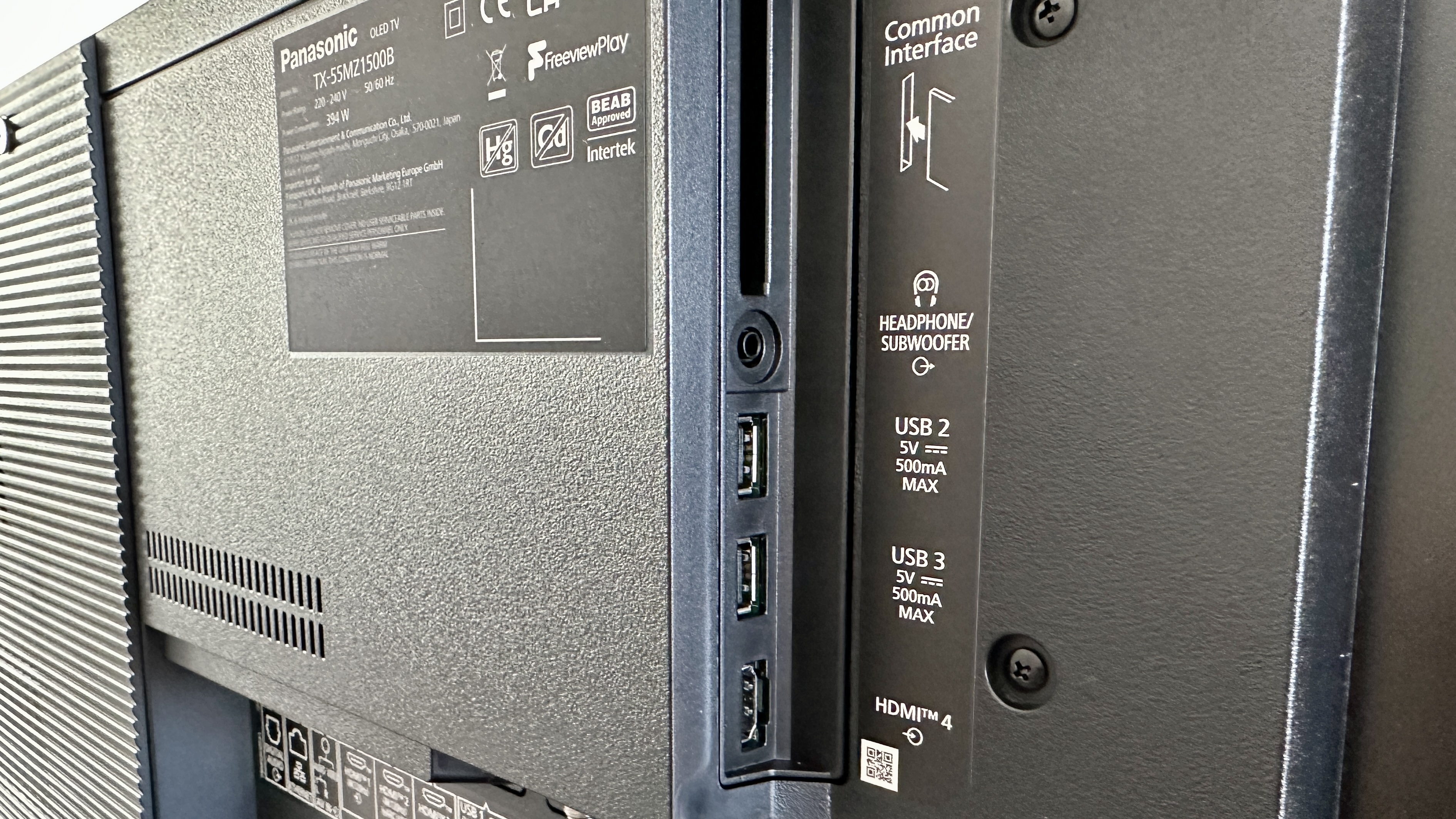
But even so the Panasonic can handle 4K/120Hz, FreeSync and G-Sync, VRR and ALLM through half of its HDMIs, at least - and it supports Dolby Vision Gaming, too, but only up to 4K/60Hz. The pop-up Game Control Board gives a lot of relevant information without having to exit the game itself, and there are specific sound modes for FPS and RPG games.
Other inputs extend to an Ethernet socket, three USB-A slots (one 3.0, two 2.0), a composite video input via 3.5mm socket, a digital optical output and a headphone output that can be reassigned as a subwoofer output. Wireless stuff is handled by Bluetooth and dual-band Wi-Fi.
The MZ1500 has a 2.1-channel audio system, featuring a couple of forward-facing full-range drivers, each getting 15 watts of power, and a ‘subwoofer’ that’s driven by 20 watts and has reinforcement from a couple of passive mode radiators. The Panasonic can make sense of Dolby Atmos soundtracks, but if you want upward- or side-firing drivers you’ll need to upgrade to the MZ2000.
Panasonic MZ1500 review: Performance
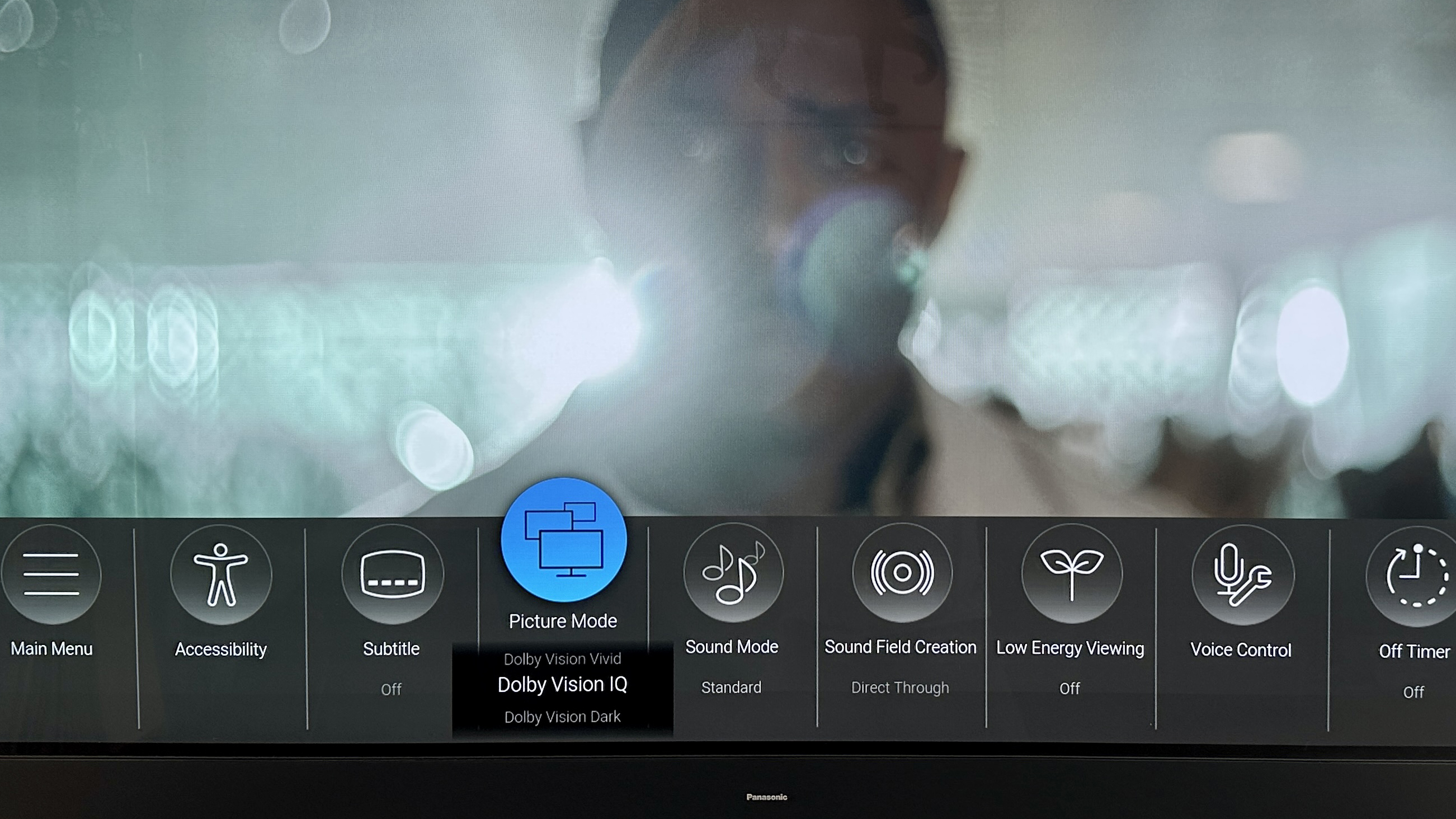
‘Authenticity’ is a big picture-quality ambition where Panasonic is concerned - and if you give the MZ1500 some suitably good-looking content, and then let its fearsome combination of technologies do their thing, ‘authenticity’ is what you can expect.
The best standard of content comes from physical storage, of course - and when in receipt of some 4K Dolby Vision stuff via a UHD Blu-ray player, the MZ1500 is a model of fidelity, insight and composure. The black tones it generates are, predictably, as deep as a philosophy professor - but they carry a huge amount of detail at the same time, and the Panasonic is able to offer tonal variation even in those scenes that are almost entirely dark.
At the opposite end of the scale, there’s proper punch and pop to white tones - Panasonic’s efforts to liberate superior brightness from the EX panel have worked a treat - as well as a similar amount of fine detail and variety. Contrasts, as a consequence, are wide and convincing - and the MZ1500 has no problems dealing accurately with dark scenes containing even small points of light.
The overall colour palette manages to be vibrant, naturalistic and wide-ranging all at once. There isn’t a colour, a shade or a minor tonal variation that the Panasonic doesn’t know all about, and it’s more than happy to deploy all of them at once if a particular scene demands it. It does quite striking work with skin-tones and skin-textures - they’re lifelike, and extraordinarily varied to the point that it’s possible to make assumptions about a person’s diet and wider lifestyle simply by looking at them on the screen of the MZ1500.
Tight, complex patterns can’t faze the Panasonic, and neither can textures. This TV is more than capable of describing even vanishingly small disparities in the textures of clothing, of plant-life, or of building materials. Ordinarily, it doesn’t help to start throwing words like ‘accuracy’ and ‘precision’ around when discussing the pictures a television serves up, simply because they so seldom truly apply. In this instance, though, they’re entirely appropriate.
Edge-definition is equally impressive, as is depth of field. And when it comes to motion-control, there’s apparently no on-screen movement that can force the MZ1500 into revealing how hard it’s working. Fast and unpredictable motion, achingly slow pans, movement that’s opposed to the direction the camera’s moving in… none of it causes any problems. The Panasonic simply locks onto it and keeps it stable.

Stepping down in resolution - not too far, mind - allows the HCX Pro AI processor to show off its upscaling talents. And it’s fair to say they’re considerable: a 1080p broadcast might be giving away the last shred of fine detail, and might allow the tiniest hint of softening where edges in a complex scene are concerned, but broadly speaking there’s nothing to take issue with here. Properly vintage stuff from the mid-80s can look a bit of a mess, it’s true, but if that’s the sort of stuff you like to watch then there’s really no need to be spending all this money on an MZ1500.
The story is similarly gratifying when the switch to console gaming is made. The Panasonic’s remarkable facility with contrasts means lighting effects are outstanding, and its ability to peer into even the murkiest scenes and return with worthwhile information takes a lot of the uncertainty out of those RPGs that rely on shadows for their jump-scares. The grippy motion-control makes racing games look a stable, confident treat, and access to the Game Control Board makes the whole gaming experience a lot less fraught than it otherwise would be. Especially if you pin the GCB to the ‘My App’ button on the remote control, giving you the shortest of short-cuts to all that info.
The MZ1500 even sounds pretty decent, too - or, at least, it does if you stay within its reasonably compact comfort zone. At lower volumes, the sound is actually quite robust and full-scale - it’s direct rather than directional, and there’s more than enough clarity to the midrange to make dialogue simple to follow even if the sonic action is kicking off all around. This very listenable performance might tempt you to wind the volume up a bit - but no good can come of it. At bigger levels the Panasonic can sound quite stressed, delivering an increase in volume that’s less apparent than the increase in top-end edginess and the lack of low-end discipline. If you’re not interested in properly cinematic volume levels, the MZ1500 sounds fine - but if you are, budget for one of the best soundbars instead.
Panasonic MZ1500 review: Design & Usability
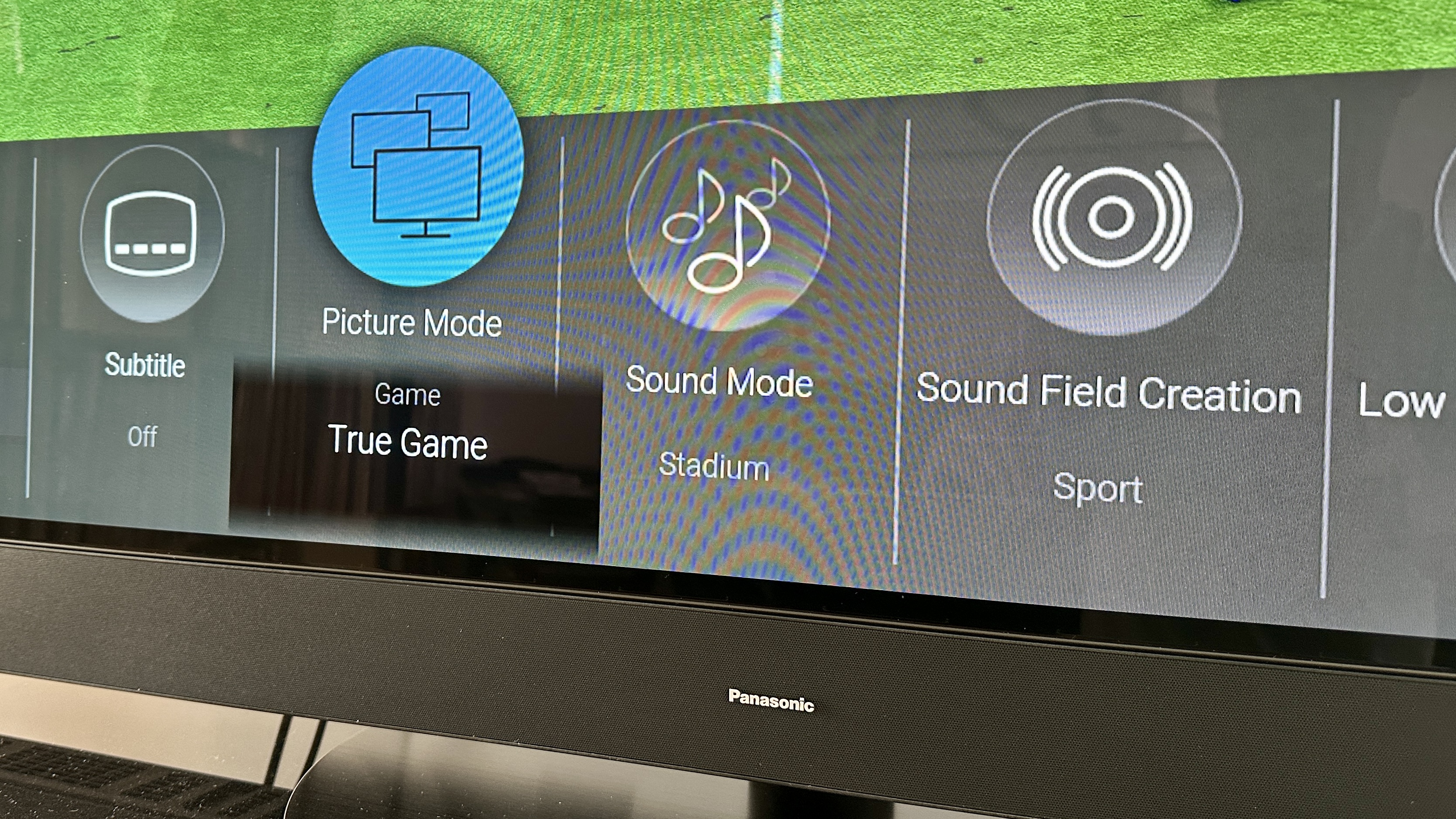
There’s sometimes elegance in simplicity, and the Panasonic MZ1500 is certainly a simple television where design is concerned. When viewed from dead ahead its bezels are narrow to the point of invisibility, and the mesh-covered ‘soundbar’-style speaker enclosure that carries the TV’s only branding is flawlessly integrated. The almost-but-not-quite circular pedestal stand is 390mm wide and 350mm deep (so the MZ1500 doesn’t need a big surface to stand on) and allows the screen to swivel through almost 30 degrees (so getting the optimal viewing angle is no trouble at all).
The screen and stand weigh a manageable 21kg for the 55-inch model, and if you prefer to wall-mount said new Panasonic TV then it’s 16kg without its stand and VESA-compatible. Bear in mind that the MZ1500 is a full 69mm deep in the places it’s not OLED-slim, though, and the integrated cable-management is rudimentary at best - so it’s perhaps not the most wall-hangable television this sort of money will buy.
Build quality and the standard of finish is not to be argued with, mind you. Admittedly you have to shop deep in the entry level to find a new TV that’s not especially well made, but from its pedestal stand to the quality of the plastics that make up the rear of the panel, the MZ1500 looks and feels ready to last for the long haul.
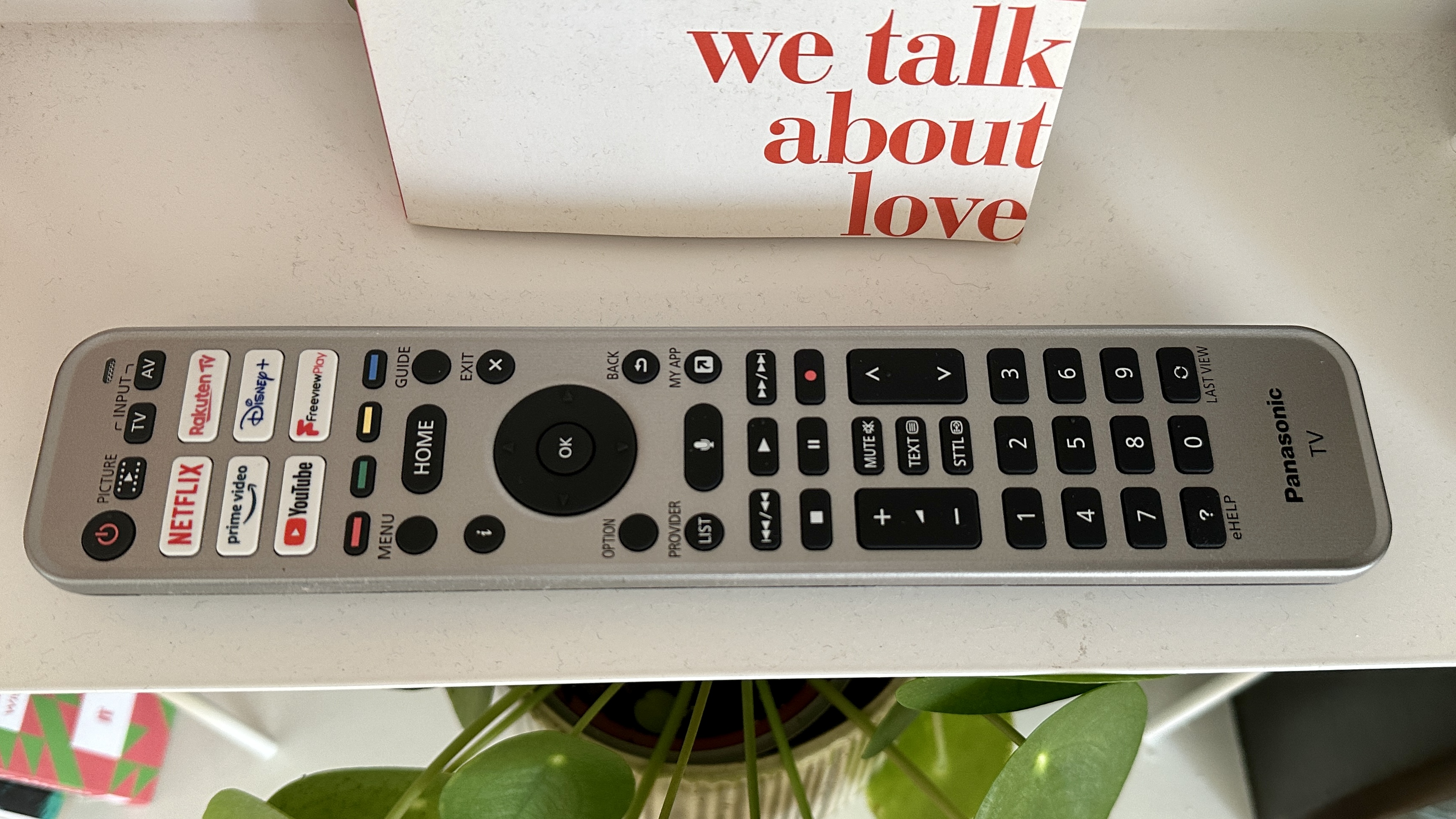
A lot of higher-end TVs ship with a couple of remote controls these days, but Panasonic puts its own spin on that particular trend by supplying the MZ1500 with a single remote control that’s the size of two. It’s not an especially stylish handset, but it’s logically laid out and the buttons are all of sensible size.
There’s the option of the Panasonic ‘TV Remote 3’ control app - it’s basic but none the worse for it - or you may prefer the sound of your own voice when it comes to getting your bidding done. If that’s the case, the Panasonic has Amazon Alexa built in and also works with Google Assistant.
No matter you control preference, you’re in charge of set-up menus that manage the by no-means-easy trick of being thorough without going on and on. There are a lot of options and a lot of adjustments available for picture quality, and to a lesser extent sound - but the menus are not unfriendly and it’s pretty straightforward to get the MZ1500 looking and sounding just as you’d like it. And if you like to leave these things to the professionals (and have the space in your budget to do so), the Panasonic is Calman Ready and can thus be calibrated to within an inch of its life.
Panasonic has been persevering with its myHomeScreen smart TV interface for a long while now - and while there’s nothing spectacular by the v8.0 that the MZ1500 is equipped with, it’s both extensive and logical. It doesn’t occupy the entire screen, which is always a good thing - here it sits in three decks on the lower half of the screen. All the usual catch-up TV and streaming service apps are available, and each in the best version of themselves as far as picture and sound are concerned.
Panasonic MZ1500 review: Verdict
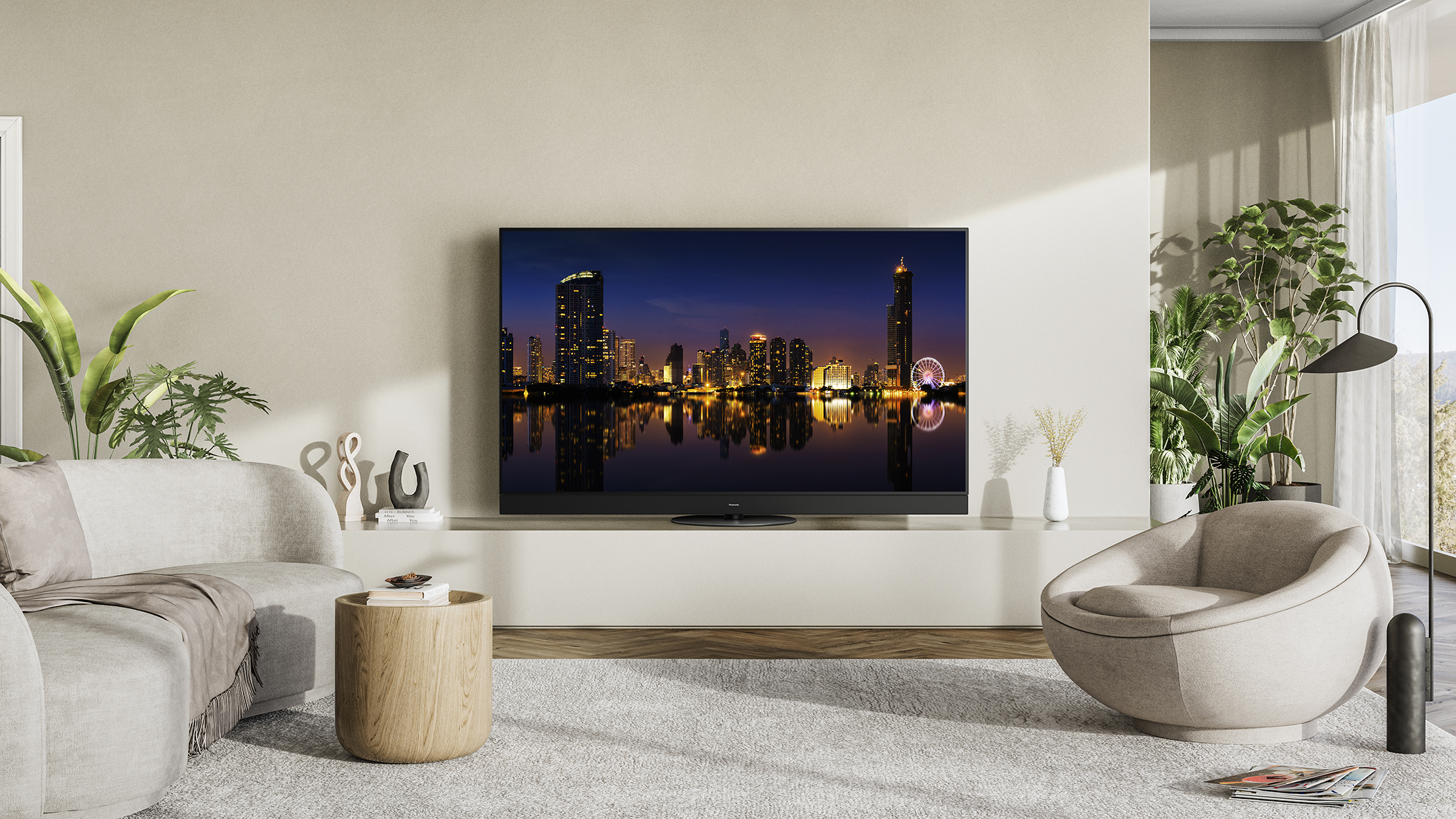
The Panasonic MZ1500's specification-to-price ratio might look slightly lop-sided on first acquaintance - but you don’t have to spend long in the company of this TV to discover it’s all business.
If picture fidelity - which is, let’s not forget, distinct from ‘vibrancy’, ‘pop’ or all those other words that can describe an initially very exciting picture - is what you truly value, then Panasonic has you covered.
Panasonic once again demonstrates there’s nothing boring about being grown up when it comes to TVs. The MZ1500 is an easy contender as one of 2023's best OLED TVs.
Also consider
It’s difficult to look beyond the LG C3 when casting around for obvious rivals to the MZ1500. It’s usefully cheaper than the Panasonic for a 55-inch model, it’s got the best combination of gaming features out there, and while it lacks the out-and-out faithfulness of the Panasonic’s images, there’s really not much wrong with the pictures it delivers. Or if you value a point of difference (or two), then you need to see the Philips OLED+907 - it has Ambilight, it has Bowers & Wilkins sound, it has tremendous picture-making abilities, and it has the oddest remote control around.
Simon Lucas is a freelance technology journalist and consultant, with particular emphasis on the audio/video aspects of home entertainment. Before embracing the carefree life of the freelancer, he was editor of What Hi-Fi? magazine and website – since then, he's written for titles such as Wired, Metro, the Guardian and Stuff, among many others. Should he find himself with a spare moment, Simon likes nothing more than publishing and then quickly deleting tweets about the state of the nation (in general), the state of Aston Villa (in particular) and the state of his partner's cat.
